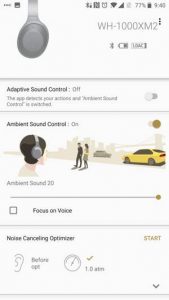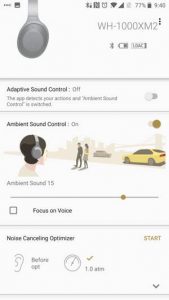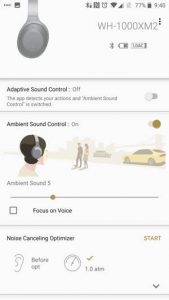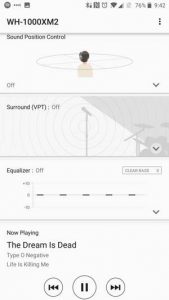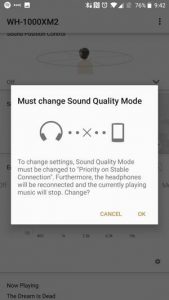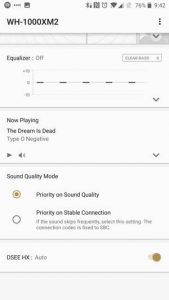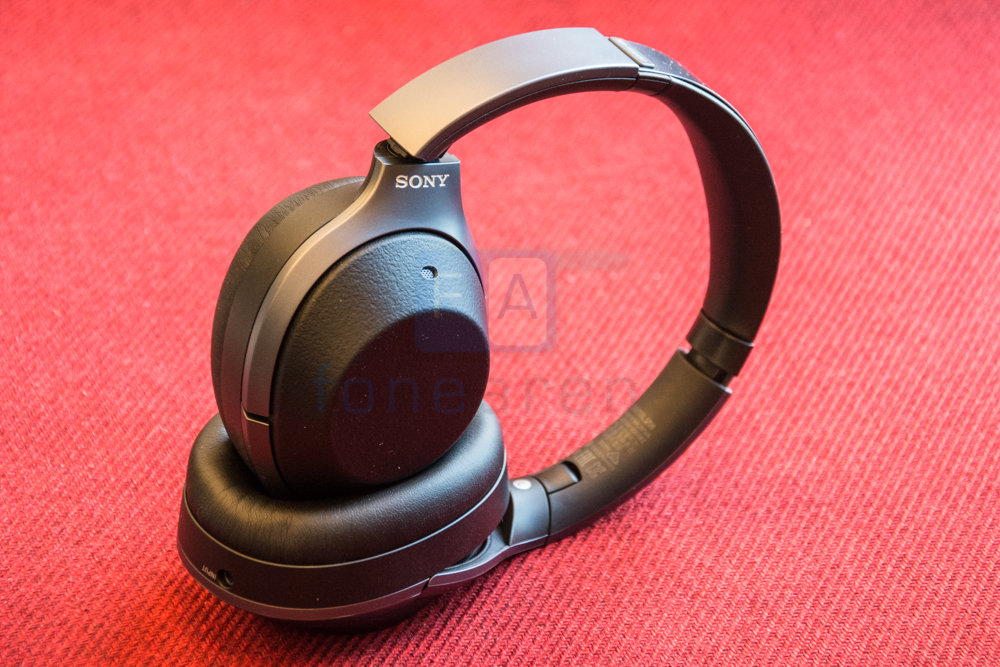
Walk down the business class aisle on any flight and I can guarantee it that you will spot a Bose headset. For good reason too. Bose pioneered, honed and expertly marketed their Quiet Comfort series of headphones as the de-facto standard for weary travelers looking for some quiet and the comfort of their favorite music. In 2016 though, Sony struck out from the blue and announced the MDR-1000X that handily beat Bose’s products and took the mantle of the best noise canceling headphone in the market. It sounded ruddy fantastic too. So when Sony announced a product that is supposed to be even better, It is obvious that we were excited to check out the Sony WH-1000XM2. Follow along for our review.
Design
The Sony WH-1000XM2 looks nigh identical to the model that it supersedes. Some materials have been updated following consumer feedback but by and large, the WH-1000XM2 haven’t touched the perfectly functional design of the 1000X. The 1000XM2 is a smart-looking headset that would look equally at home in a business class lounge or while listening to some music at home. The design language is subdued and includes a metal band on top. The body is predominantly plastic to keep the weight under control.
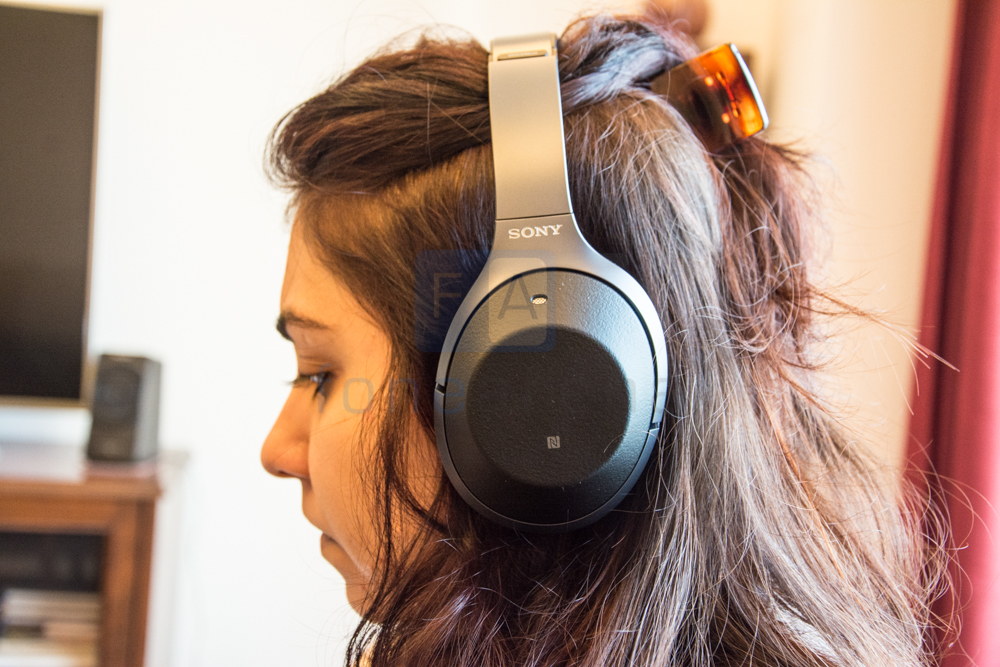
Unlike something like the Beyerdynamic Aventho, the WH-1000XM2 is an over the head design. The quality of padding on the earcups and the clamping force hence makes even more sense. Sony uses reasonably thick synthetic leather on the earcups and the earcups themselves can swivel both along the horizontal and vertical axis which makes them very comfortable. But then again, this is not all that different from the 1st gen headset. What we did feel has improved is the level of clamping force or the more specifically, the reduced clamping force which lets you wear the headphones for longer durations at a time. This is particularly noticeable to me as the heavy clamping force of many a headphone like the ATH-M50X have triggered my migraine headaches. Good job, Sony!
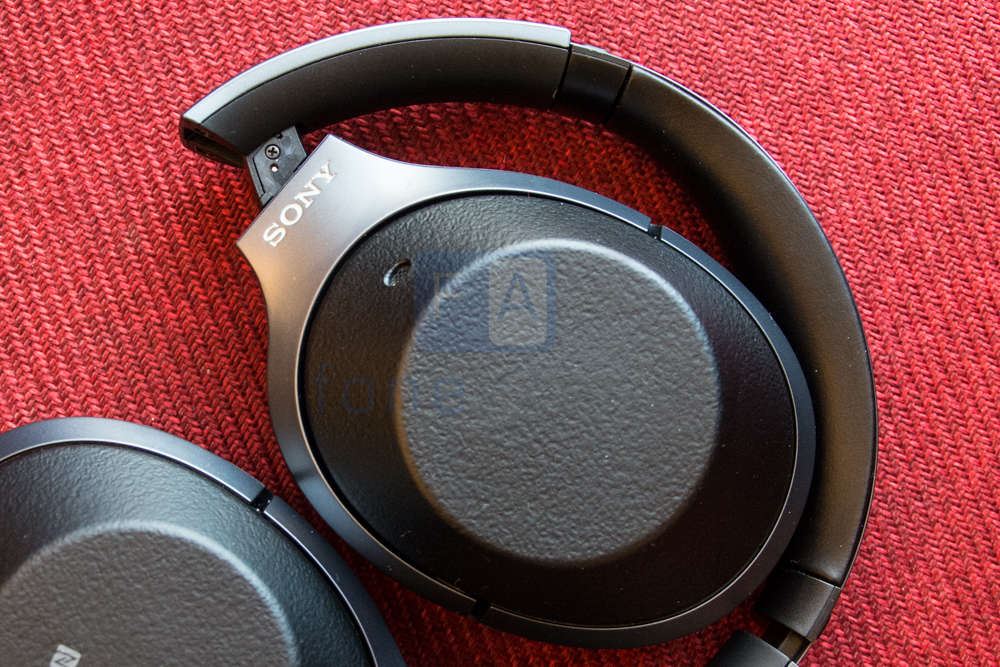
Talking about the earcups, while the material still emulates the look of textured leather, it has been replaced with hard plastic this time around. The synthetic leather used on the 1000X could pick up knicks and scratches over time, this should hopefully not be the case here. I’ve put the Sony WH1000XM2 over 70 hours during the course of this review including 30+ hours, 15000 miles of flights. The headphones continue to look as good as new.

Let’s talk about controls, the Sony WH-1000XM2 like the MDR1000X uses a system of gestures on the right earcup to control functionality. Gestures on headphones are a bit fiddly by nature but are still a better alternative to having buttons and toggles for everything. Sony has refined the sensitivity just a little bit so false triggers have been reduced slightly. Pressing your palm to the earcup to cut out the noise cancellation and drop out volume works just as well as the first generation though we wish Sony would let us trigger a long duration version of this by holding down on the earcup. It can get quite awkward holding up your hand to your ear cup for a minute or so if you want to listen in to a cabin announcement on a flight. On the right earcup, you’ll also find a micro USB charging port which can top off the battery in about 2 hours or so. Much as we hate having to carry an additional cable for a now obsolete standard, you’ll be delighted to know that you likely won’t be using this too often. Sony has nearly doubled the battery life on the 1000XM2 and claims a battery life of 30 hours on a single charge. I tested out this claim over the course of a series of long flights and found it to be true.
Unlike the first generation model, the noise cancellation and ambient noise mode toggles have been integrated into a single button on the left ear cup which makes it easier to find but also requires more taps to perform a single action. No big loss really. Below it, you will find the power/pair button and a 3.5mm input jack further down. Yes, you can use the noise cancellation functionality even when using the headphone jack.
Features
Sony has taken the smart feature set of the MDR1000X and put it in turbo mode, so to speak. Every single software function has been refined and the ability to tweak & tune is the name of the game. To get the most out of the 1000XM2, you’ll need to install Sony’s Headphones app on your source device.
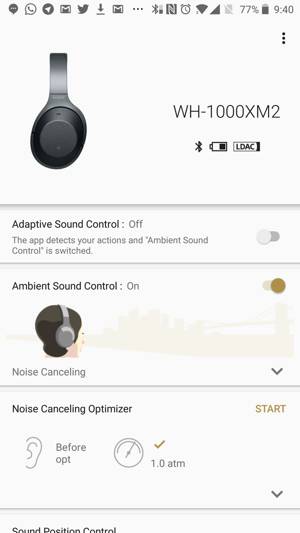
One of the key features that Sony talked about while introducing the new headphones was adaptive sound control. Using a combination of the built-in gyroscope, sensors and software smarts, the headphone can lower or raise the level of noise cancellation to suit the ambient surroundings. If you are walking down the street, it can lower the cancellation levels so that you can continue to hear surrounding traffic albeit at a lower volume. In practice, we found this to work well enough but preferred to keep it switched off.
While the button on the headphone lets you switch between different ambient modes, the app lets you adjust the strength. Think of it as a manual version of the adaptive sound control. Up next is the noise canceling optimizer. Using an atmospheric pressure sensor, Sony claims that the headphone can adjust the level of noise cancellation and sound profile depending on your ambient surroundings.
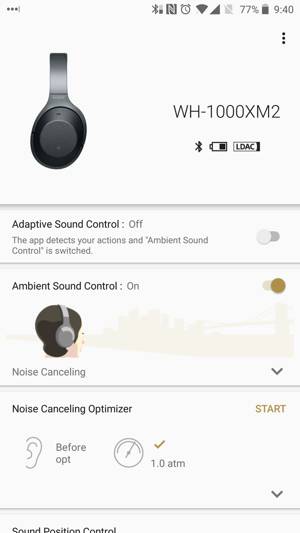
We tried this a couple of times both on land and up in the air in a plane and while the software did claim to make optimizations, there wasn’t any perceptible change in the sound profile or pressure.
Before we get to the next three big features of Sony’s Headphones app, it is important to know a bit more about the codec support on offer. The Sony WH-1000XM2 offers not just plain old SBC and AAC but also AptX, AptX HD as well as LDAC. This makes it perhaps one of the most codec compatible wireless headphone on the market. LDAC and AptX HD approach near lossless quality and now that Android Oreo has LDAC baked in thanks to Sony’s generosity, a whole lot people will be able to make use of high-quality wireless audio even if your phone manufacturer did not pony up the licensing fee for Apt X.
And now on to the three features that are extremely important from a sound quality perspective and the ones that you cannot use in high-quality mode. You see, Sony offers an easy way to toggle between sound quality and a stable connection. In sound quality mode, the headphone will select the highest quality codec available and scales as high as LDAC. In stable connection mode, on the other hand, you get dropped down to SBC. Compared to the LDAC that can scale as high as 990kbps where it is transmitting 16bit / 44.1Khz CD-quality audio, SBC mode is more like a 256kbps MP3. The bigger issue, however, is that you cannot use the equalizer, surround or directional audio settings in high-quality mode. Sony doesn’t quite say this but we feel it could be because Sony is running all soft equalization on the smartphone end. If true, this would be quite unfortunate since even a mid-range headphone like Sony’s own XB950B1 is able to store profiles on the headset. I hope this is something Sony will be able to resolve by the next generation of the headset. Coming to the settings themselves, the directional audio or virtual positioning mode is a tech demo at best since we can’t imagine why anyone would want all their music to be coming from only one side. It is not even very effective as an accessibility feature. The surround mode lets you replicate spaces like a club, arena or a concert hall. Audiophiles might cringe at this but depending on the genre of music, we found certain effects here to be rather enjoyable since they further accentuated the V-shaped signature. The equalizer works as you’d expect and offers a reasonable amount of flexibility in adjusting the sound.
Audio Performance & Noise Cancellation
All else apart, the Sony WH-1000XM2 is, first of all, a headphone, a rather expensive one at that. If you’re spending 30,000 rupees on a pair of headphones, you expect fantastic sound quality and that is certainly the case here. The WH-1000XM2 is not really an audiophile headset and so you are already looking at the wrong headset if you want a neutral and balanced sound. Then again, no audiophile expects this from a wireless, noise-canceling headset.
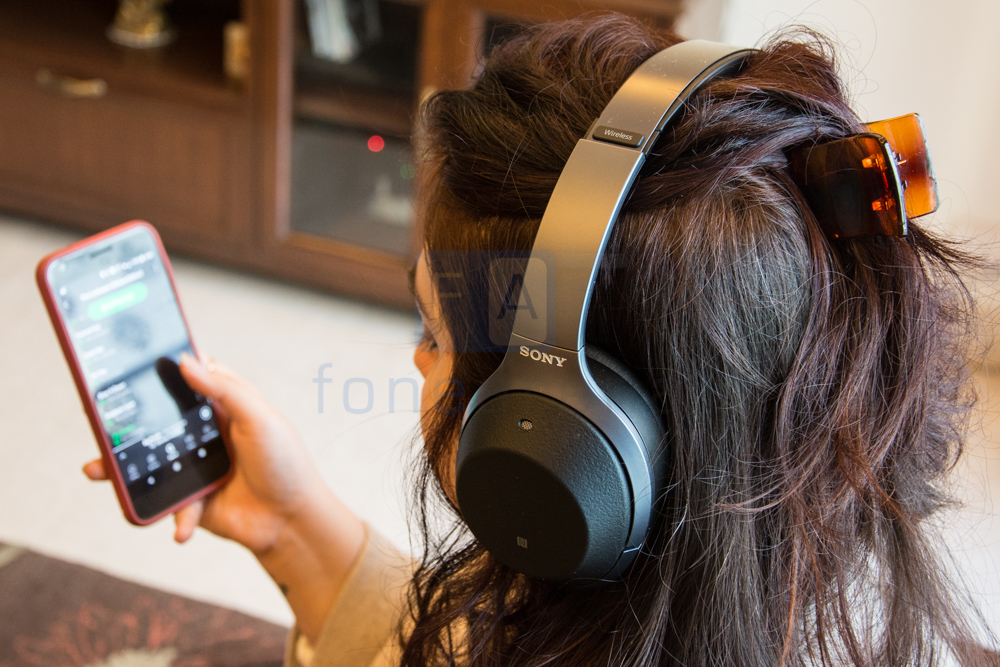
Pop in some bass heavy tracks and you’ll experience some of the best lows and deep rumbling bass that should please all but the most ardent basshead. Listen to tracks like Pirohia by Keretta and the musicality of the output absolutely jumps out at you. It is fair to say that modern music is reproduced exceptionally well here. Dive down into some jazz or classical music though and things fall short rather drastically. For one, as low as the Sony can go, it is relatively lacking in terms of dynamic range and the upper end. The rolled off highs make female vocals sound somewhat boring while the exaggerated bass often makes them sound muddy, lacking definition.
All of that might make it *ahem* sound like a poor headphone but that’s not really the case. As we mentioned earlier, the WH-1000XM2 caters to a very specific market and if you are looking for noise cancellation capabilities, nothing gets better than this. Somehow Sony has managed to improve the cancellation over the MDR1000X as well and like the previous generation hardware, it handily outpaces anything that Bose has produced so far. We’ve already mentioned all the optimization options available but the proof is in the pudding. We put it through 30+ hours of flights which involved everything from noisy turboprops to noisy toddlers and the headphone handled everything with aplomb. With the noise cancellation switched on, the surrounding din drops down to a quiet whisper and is completely drowned out if you are listening to music even at a low volume.
Conclusion
The Sony WH-1000XM2 is the best noise canceling headset in the market. Exceptional battery life, excellent comfort levels and the uncanny ability to turn down the volume on your surroundings make it an excellent purchase for anyone who flies a lot or simply wants a quieter environment around them.
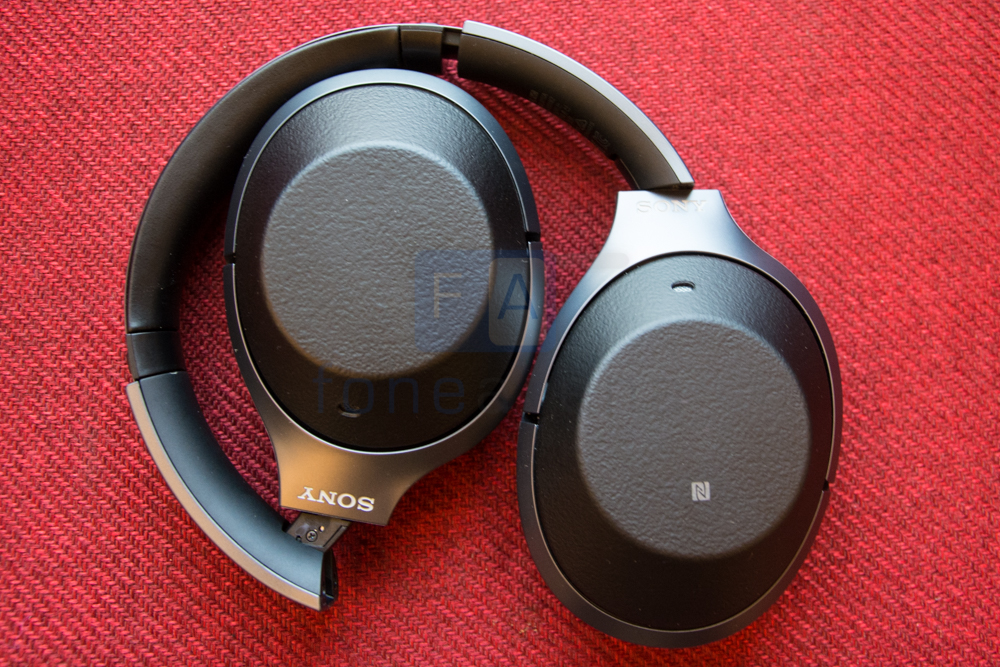
Of course, they sound good too but 1000XM2 was never really meant to be a reference grade headphone so you certainly won’t get the balanced output and refined music rendition that is so important for classic, jazz, and vocal-centric music. Priced at Rs. 30,990, the Sony WH-1000XM2 is expensive but is absolutely worth the asking price since nothing else on the market gets close to this.

